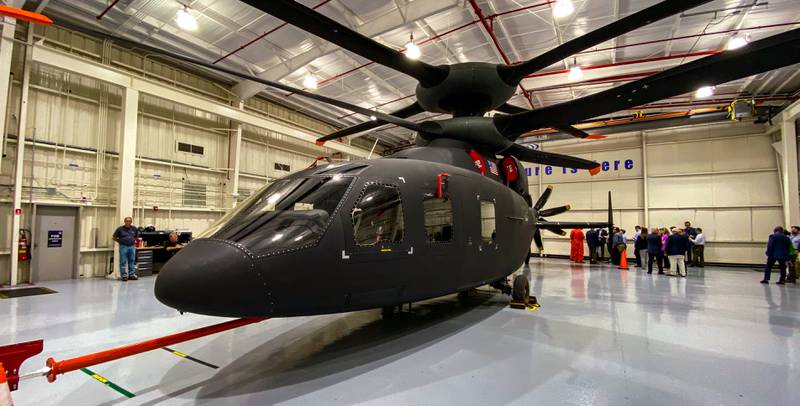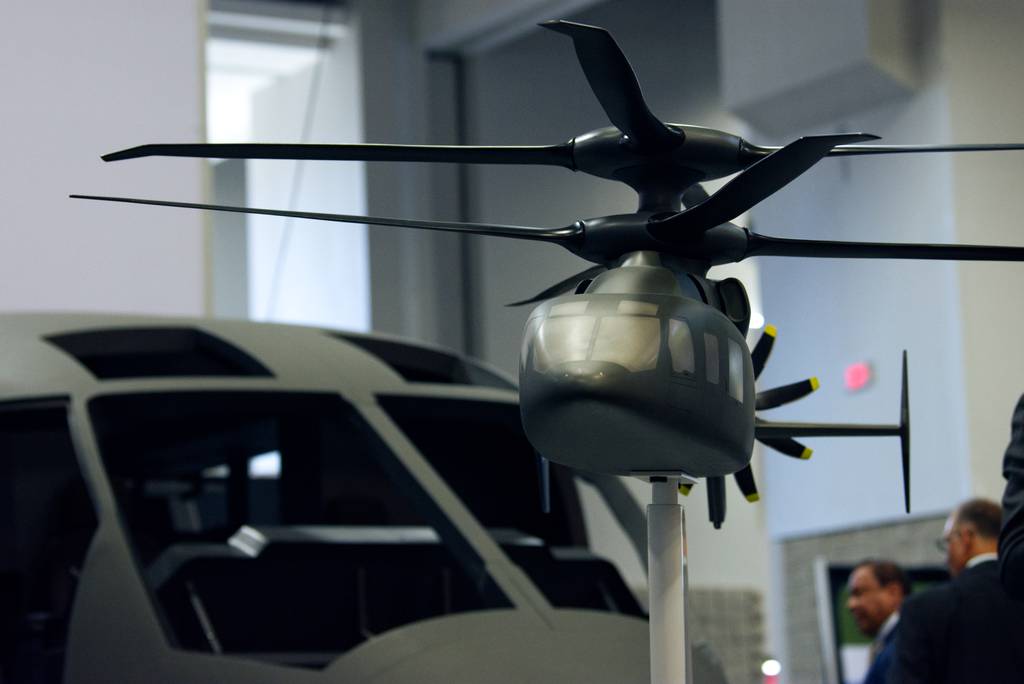NASHVILLE, Tenn. — U.S. Army officials stressed the service was clear in laying out its requirements for a modular open systems architecture and what the service wants Future Long-Range Assault Aircraft competitors to provide in proposals to prove the capability.
Lockheed Martin-owned Sikorsky’s misinterpretation of the level of detail needed to prove its aircraft design had an open system architecture resulted in the disqualification of its proposal, according to Sikorsky’s president, and ultimately, the loss of a chance to win a contract potentially worth $70 billion over the life of the program.
RELATED

A Sikorsky-Boeing team lost the Army’s competition to build FLRAA in December to Textron’s Bell. Bell designed, proposed and will build a next-generation tiltrotor aircraft that will serve the long-range assault mission beginning in 2030.
Sikorsky protested the decision, which the Government Accountability Office denied in April, revealing that the team’s proposal received an “unacceptable” rating in the engineering design and development category’s architecture sub-category.
“Overall, the functional architecture provided by [Sikorsky] did not demonstrate an adequate approach to meet the requirements of the solicitation and deferred the work scope to the Weapon System Development Program where the functional architecture would be more fully defined,” the GAO report reads.
“These significant weaknesses and weaknesses resulted from insufficient evidence and inadequately defined scope to determine how [Sikorsky’s] proposed architecture would meet the government’s [Modular Open System Architecture] and architecture requirements and presents a cost and schedule impact resulting in an unacceptable risk during the Weapon System Development Program,” it said.
“I want to be real clear that I’m not characterizing why Sikorsky or Lockheed lost … I don’t know why that happened,” Maj. Gen. Robert Barrie, the Army’s program evaluation officer for aviation, said in an interview with Defense News at the Army Aviation Association of America’s annual conference last week.
“I was not part of the actual source selection,” he said, “so I had the same concern initially that probably everyone would have, like, ‘Hey, are we not communicating something clearly?’”
But, Barrie said, “we’ve done a very rigorous assessment of ourselves and our assessment is that, yes, we are communicating clearly,” based on consultation with a one-thousand members-deep Architecture Collaboration Working Group comprised of industry, academia and government subject matter experts.
The Army also received feedback from both teams competing that they did understand what the MOSA approach is across FVL’s suite of systems, Barrie added.
The Army “could not have been more clear over the last couple of years about the digital position that they were taking as it relates to modular open systems approaches,” Jeffrey Langhout, the services’ Combat Capabilities Development Command Aviation & Missile Center director, said at the conference.
‘A fifth grader could understand it”
Last year, at the same event, his directorate put together a video using a fifth grader to explain MOSA, playing it during a panel discussion. “We intentionally made it to where a fifth grader could understand it… to try to help people understand it’s not nearly as complicated as it sounds, which is really just existing standards, not somebody’s special mouse trap [where] they are the only people in the world that understand how that mouse trap works,” Langhout said. “It’s really that simple, but yet it’s amazing how unbelievably complicated some folks try to make it.”
The two-star general in charge of the Army’s vertical lift modernization detailed the extent the service has worked to get MOSA right particularly within the mission system architecture over the past decade. The service conducted rigorous evaluations using technology demonstrators, which resulted in an Army Oversight Requirements Council approval in June 2020 to move forward on the program, Maj. Gen. Wally Rugen said at the conference.
Sikorsky President Paul Lemmo fired back on some initial reports where he felt it sounded like the team’s entire engineering effort and design was unacceptable “and that was not the case,” he told Defense News in an interview at the conference.
According to Lemmo, Sikorsky and the Army had different interpretations of the degree of information that was needed to prove it could be modular and open at lower sub-system levels within the mission system architecture for the aircraft and that resulted in the team not providing enough information where it was required within the submitted proposal.
“If you are deemed unacceptable in any one sub-factor, that means the entire factor is unacceptable and therefore you’re un-awardable,” Lemmo added. “It’s unfortunate, but that’s how it works.”
Lockheed knows how to design and operate within open architectures, Lemmo stressed, and has done so across many platforms.
Future Attack Reconnaissance Aircraft
Lemmo said the company has learned from the loss and “if there’s any good news coming out of a loss is that the Army’s feedback on X2 was positive.”
The team’s submission – Defiant X – was based on Sikorsky’s X2 coaxial rotor technology, which it has been working on for decades. The company has been flying smaller prototypes including the Raider aircraft. Raider is still logging flight hours and collecting data at the company’s West Palm Beach, Florida, flight test center.
Sikorsky is again facing off against Bell in the Army’s Future Attack Reconnaissance Aircraft competition. Both teams have fully built competitive prototypes that await the Army’s next-generation Improved Turbine Engine Program, or ITEP, engine before a fly-off expected to kick off in the fourth quarter of fiscal 2024.
“The capability that [Defiant X] provided for the mission areas that the Army wanted was very, very solid and the Army agreed with that,” Lemmo said. “We’re not deterred in any way as we look toward FARA in terms of what X2 can provide in that mission as well.”
Jen Judson is an award-winning journalist covering land warfare for Defense News. She has also worked for Politico and Inside Defense. She holds a Master of Science degree in journalism from Boston University and a Bachelor of Arts degree from Kenyon College.








